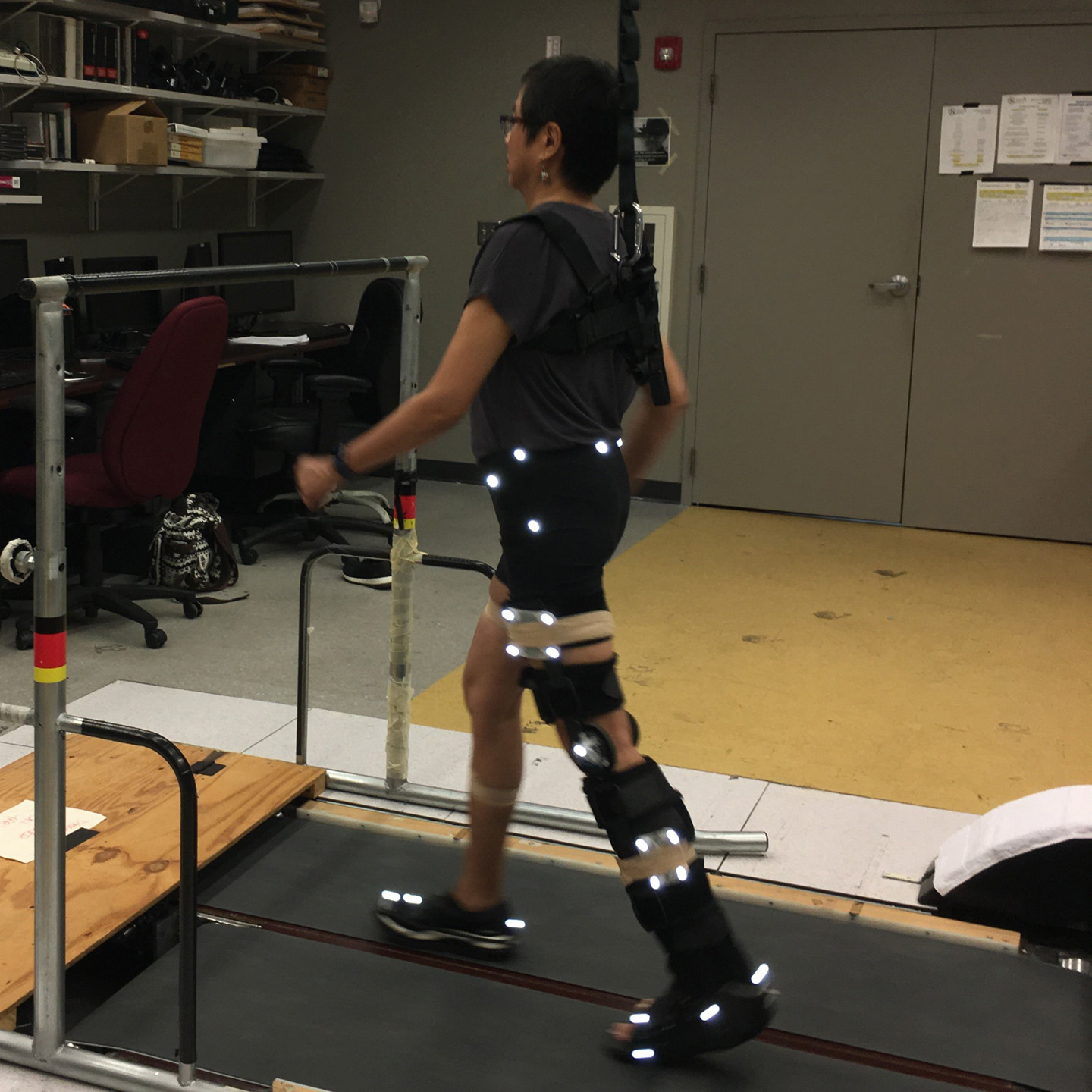When I volunteered for a study that will observe and measure movements during walking, I knew only that my participation would help researchers figure out how to make better prostheses for people missing limbs. I didn’t know that the experience would surface strong feelings of empathy for people with ambulatory problems.
On the day of my appointment, I was met by Kinsey Herrin, a prosthetist/orthotist and the clinical liaison for the study, and Samuel Kwak, the graduate student working with Young-Hui Chang on the research study. Chang is a professor in the School of Biological Sciences and the principal investigator of the Comparative Neuromechanics Laboratory, where the study took place.
The study – “Accelerating Large-Scale Adoption of Robotic Lower-Limb Prostheses through Personalized Prosthesis Controller Adaptation” – compares the motions, forces, and muscle activity during walking of people with amputations versus controls. The goal is to develop better ways of controlling prostheses. I was part of the control group. My counterpart, I learned, is a woman who is amputated below the knee on her left leg.
After the orientation to the study and reminders of confidentiality and safety, Sam and Kinsey put me through several walking sessions: normal, with a knee brace locked in extension, with an ankle brace, and with both braces. Each session started with a measurement of base line, followed by walking on a split-belt treadmill three times, each at a different speed. At each speed, I’d walk for three minutes before data are collected.
Data were collected from the force plates beneath the treadmill and by infrared cameras recording the movements. As I walked, I saw on a monitor the motion of my legs – shown as white dots corresponding to infrared sensors tacked on to various parts of each lower limb.
It was easy-peasy with normal walking; the only mildly tricky part was trying to mind the small gap between the two parts of the split-belt treadmill.
With braces on just one leg, it was a different story. The braces were heavy. My left leg was constrained. I never felt so asymmetrical in my life. Walking without the ability to bend the knee, or flex the ankle, is awkward, at best.
“This is tough,” I heard myself saying over and over. If this is tough for me, I thought, how much more for people without limbs; it must be harrowing for them.
Kinsey has worked with patients who have amputations. While prosthetists are quite adept at creating functional passive prostheses for patients, restoring power naturally during walking is much more challenging.
Prosthetists and patients can spend lots of time in the clinic over multiple visits tuning a powered device to be perfect, Kinsey said. The back and forth can create a burden on the patient and the clinician. The ultimate goal of this study – Kinsey and Sam reminded me several times – is to make prosthesis tuning easier and more automatic for patients and clinicians.
I spent three hours volunteering for the study. I consider those among the most useful three hours of my life, considering that my participation could help ease the life of people with lower limb amputations.
The study needs more volunteers. If you can spare three hours to advance the science of prosthesis control, contact Kinsey at kinsey.herrin@biosci.gatech.edu for more information.
For More Information Contact
A. Maureen Rouhi, Ph.D.
Director of Communications
College of Sciences



